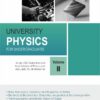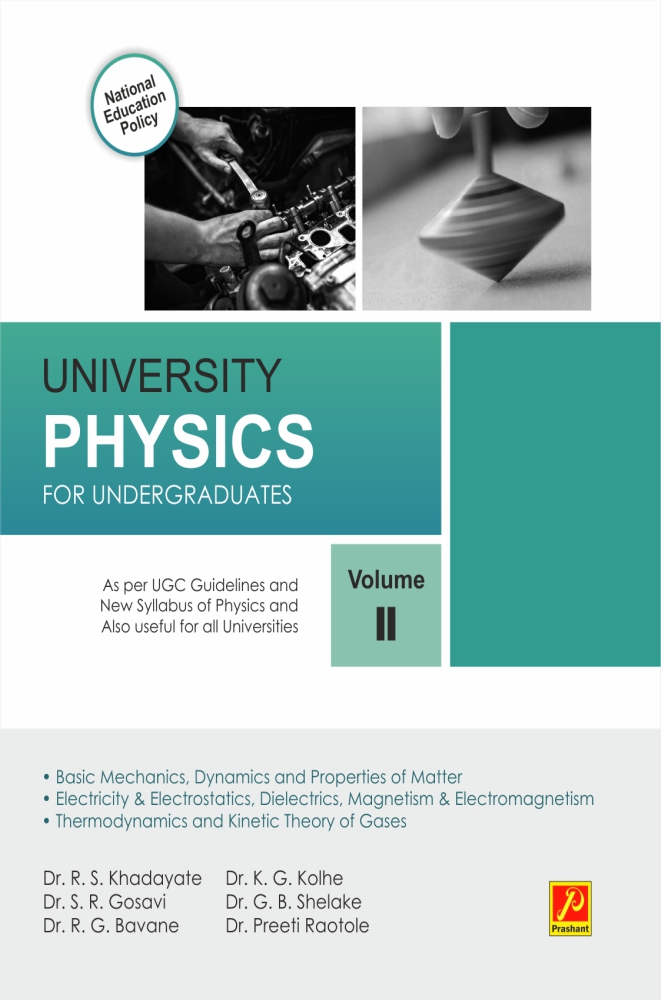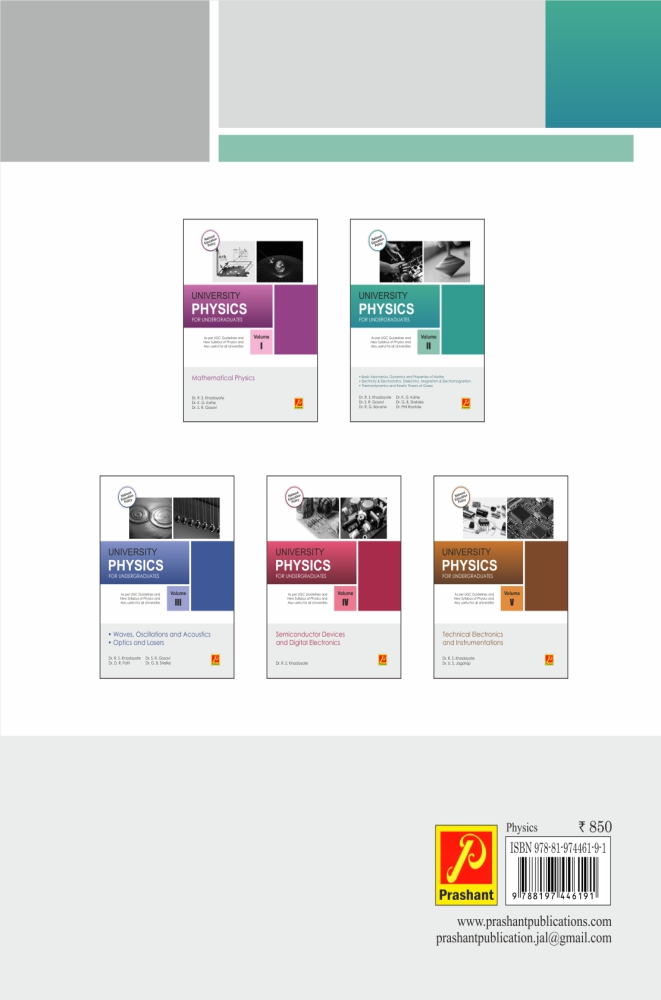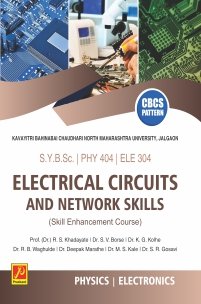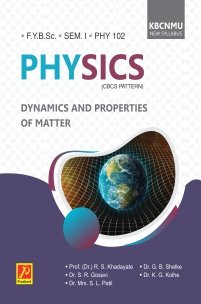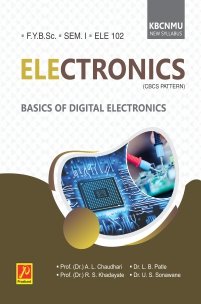University Physics for Undergraduates
(Volume II)
Authors:
ISBN:
₹850.00
- DESCRIPTION
- INDEX
Physics is the fundamental science that seeks to understand the natural laws governing the universe. Its principles form the basis for countless technological advancements and scientific inquiries that shape our world. This reference book aims to serve as a comprehensive guide for students, educators, and professionals who seek to deepen their understanding of this dynamic field.
We are very glad to present this book “University Physics for Undergraduates (Volume-II)”. Our objective in creating this book is to offer a detailed and systematic knowledge related to topics Basic Mechanics, Dynamics and Properties of Matter, Electricity & Electrostatics, Dielectrics, Magnetism & Electromagnetism, Thermodynamics and Kinetic Theory of Gases. This book is written by keeping in mind the curriculum prescribed by UGC.
To develop interest of learners, diagrams and solved examples are given in each chapter. At the end of each chapter, multiple choice questions, short answer questions and long answer questions are provided. The book is written in simple and lucid language.
This book is the result of contributions from numerous experts in various subfields of physics, whose insights and expertise have enriched its content. We extend our gratitude to these individuals for their dedication and hard work.
SECTION – I
Basic Mechanics, Dynamics and Properties of Matter
1. Laws of Motion
1.1 Introduction 1.2 Newton’s laws of motion 1.3 Frames of reference 1.4 Centre of Mass 1.5 Centre of Mass for a Two Particles System 1.6 Centre of Mass of a System of n-particles 1.7 Centre of Mass of a Rigid Body 1.8 Centre of mass of a circular ring 1.9 Dynamics of a system of particles
2. Momentum and Energy
2.1 Introduction 2.2 Momentum 2.3 Conservation of Momentum 2.4 Work – Work Done By A Constant Force 2.5 Energy 2.6 Work – Energy Theorem
2.7 Principal of Conservation of Energy 2.8 Motion of Rocket (Rocket propulsion)
3. Rotational Motion
3.1 Introduction 3.2 Angular Displacement 3.3 Angular Velocity 3.4 Angular acceleration 3.5 Relation between linear velocity and angular velocity
3.6 Rigid Body 3.7 Analogy between translational and rotational motion
3.8 Moment of Inertia (I) 3.9 Rotational Motion of a rigid body and its angular velocity 3.10 Torque (Turning Effect of Force) 3.11 Expression for torque acting on a rotating rigid body 3.12 Physical significance of Moment of Inertia 3.13 Linear momentum and angular momentum 3.14 Expression for angular momentum of a rotating rigid body 3.15 Principle of conservation of angular momentums.
4. Gravitation
4.1 Introduction 4.2 Newton’s Law of Gravitation 4.3 Motion of a particle in a central force field (motion is in a plane, angular momentum is conserved, and areal velocity is constant) 4.4 Kepler’s Laws (statements only) 4.5 Satellite in a circular orbit and its applications 4.6 Weight and weightlessness 4.7 Basic idea of Global Positioning System (GPS)
5. Elasticity
5.1 Introduction 5.2 Elastic limit and Hooke’s Law 5.3 Elastic moduli (Elastic constants) 5.4 Stress-strain diagram 5.5 Poisson’s ratio 5.6 Relation between three elastic moduli Y, k and η 5.7 Poisson’s ratio in terms of elastic constants and its limiting values 5.8 Work done in a wire 5.9 Twisting couple on a cylinder
5.10 Torsional pendulum 5.11 Determination of Rigidity modulus and moment of inertia – Y, k,η and σ by Searle’s method.
6. Surface Tension
6.1 Introduction 6.2 Basic Concepts of Surface Tension and Angle of Contact 6.3 Pressure Difference Across a Liquid Surface 6.4 Relation Between Surface Tension, Excess Pressure and Radius of Curvature 6.5 Factors Affecting Surface Tension 6.6 Experimental Determination of Surface Tension by Jaeger’s Method 6.7 Applications of Surface Tension.
7. Fluid Dynamics and Viscosity
7.1 Introduction 7.2 General concept of fluid flow 7.3 Streamline flow and turbulent flow 7.4 Critical velocity 7.5 Equation of continuity 7.6 Different forms of energy possessed by liquids 7.7 Bernoulli’s theorem 7.8 Applications of Bernoulli’s Theorem 7.9 Concept of Viscosity 7.10 Viscous Liquids and Coefficient of Viscosity 7.10 Flow of Liquid through a Capillary Tube 7.11 Experimental determination of coefficient of viscosity of liquid by Poiseuille’s method (formula) 7.12 Dependence of Viscosity of Liquid on Temperature.
SECTION – II
Electricity and Electrostatics, Dielectrics, Magnetism and Electromagnetism
8. Network Theorems in Current Electricity
8.1 Introduction 8.2 Kirchhoff’s Laws and Loop analysis by Kirchhoff’s Laws 8.3 Thevenin’s theorem 8.4 Norton’s Theorem 8.5 Difference between Thevenin’s and Norton’s Theorem 8.6 Maximum Power Transfer Theorem, 8.7 Electric Power and energy 8.8 Heating effect of electric current.
9. Basics of Electrostatics
9.1 Introduction 9.2 Charge 9.3 Coulomb’s Law 9.4 Coulomb’s Law in Vector form 9.5 Principle of superposition 9.6 Distribution of Charges 9.7 Electric (Electrostatic) field 9.8 Electric field intensity 9.9 Expression for electric field intensity due to a point charge 9.10 Electric Lines of Force 9.11 Electric Flux 9.12 Electric field due to a system of point charges (principle of superposition) 9.13 Electric Potential.
10. Gauss’s Theorem and Electric Dipole
10.1 Introduction 10.2 Electric flux 10.3 Gauss theorem 10.4 Applications of Gauss’s theorem 10.5 Electric dipole.
11. Capacitance and Dielectrics
11.1 Introduction 11.2. Concept of a Capacitor 11.3. Capacitance of an isolated Spherical Conductor 11.4. Capacity of a Parallel Plate Capacitor 11.5 Effect of dielectric 11.6 Capacity of a Spherical conductor enclosed by an earthed concentric spherical shell 11.7 Capacity of an earthed sphere enclosed by a concentric spherical shell 11.8 Capacity of a cylindrical Capacitor 11.9 Energy Per unit Volume of a Capacitor in electrostatic field. 11.10 Dielectrics and its polarization 11.11 Parallel plate capacitor completely filled with dielectric 11.12 GAUSS’ Theorem in Dielectrics.
12. Magnetism
12.1 Introduction 12.2 Magnetic Properties of materials 12.3 Origin of magnetism 12.4 Brief Introduction of dia-magnetic, paramagnetic and ferromagnetic materials 12.5 Hysteresis 12.6 Soft and Hard Magnetic Materials 12.7 Differences between the soft and hard magnetic materials 12.8. Distinguish between Diamagnetic, Paramagnetic and Ferromagnetic materials 12.9 Introduction of Magnetostatics 12.10 Biot–Savart’s Law 12.11 Applications of Biot – Savart’s Law 12.12 Divergence of magnetic field 12.13 Curl of magnetic field 12.14 Magnetic vector potential 12.15 Ampere’s circuital law.
13. Electromagnetic Induction
13.1 Introduction 13.2 Faraday’s laws of electromagnetic induction 13.3 Lenz’s Law of Electromagnetic Induction 13.4 Self induction of a coil 13.5 Mutual induction 13.6 Solenoid 13.7 Mutual inductance in terms of self inductance 13.8 Energy stored in an inductor 13.9 Distinguish between self induction and mutual induction.
14. Maxwell`s equations and Electromagnetic wave propagation
14.1 Current Density 14.2 Equation of continuity of current 14.3 Displacement current 14.4 Maxwell’s equations in differential form 14.5 Maxwell’s equations in integral form 14.6 Electromagnetic wave propagation through vacuum and isotropic dielectric medium 14.7 Poynting vector 14.8 Transverse nature of EM waves 14.9 Polarisation.
SECTION – III
Thermodynamics and Kinetic Theory of Gases
15. Basics of Thermodynamics and Its First Law
15.1 Introduction 15.2 Thermodynamic Variables 15.3 Thermodynamic Equillibrium 15.4 Zeroth Law of Thermodynamics 1.5 Concept of Internal Energy 1.6 First Law of Thermodynamics 15.7 Work Done by a Gas 15.8 Work Done On a Gas 15.9 Indicator Diagram 15.10 Types of Thermodynamic Processes 15.11 Specific Heats of a Gas 15.12 Two Principal Specific Heats of a Gas 15.13 Applications of First Law of Thermodynamics 15.13.3 Adiabatic Relations 15.13.4 Work Done During an Adiabatic Change 15.14 Compressibility and Expansion Coefficient: 15.15 Reversible and Irreversible Changes/Processes.
16. Second and Third Law of Thermodynamics and Entropy
16.1 Introduction 16.2 Carnot Heat Engine 16.3 Carnot’s Theorem 16.4 Second law of thermodynamics 16.5 Entropy 16.6 Third law of thermodynamics
16.7 Unattainability of Absolute Zero Temperature 16.8 Enthalpy.
17. Heat Engines
17.1 Carnot’s Ideal Heat Engine 17.2 Carnot’s Cycle 17.3 Efficiency of Carnot’s Engine 17.4 Practical Heat Engines 17.5 Otto Engine 17.6 Otto Cycle
17.7 Efficiency of an Otto Cycle 17.8 Diesel Engine 17.9 Diesel Cycle 17.10 Efficiency of Diesel Cycle 17.11 Comparison Between Diesel Engine and Otto Engine.
18. Kinetic Theory of Gases
18.1. Introduction 18.2 Derivation of Maxwell’s Law of Distribution of Velocities 18.3 Experimental Verification of Maxwell’s Law of Distribution of Velocities 18.4 Determination of mean free path 18.5. Transport Phenomena 18.6. Viscosity of Gases (For Vertical case) 18.7 Conduction of Gases (For vertical case)
18.8 Diffusion of Gases (For vertical case) 18.9 Law of Equipartition of Energy (Equipartition Theorem).

